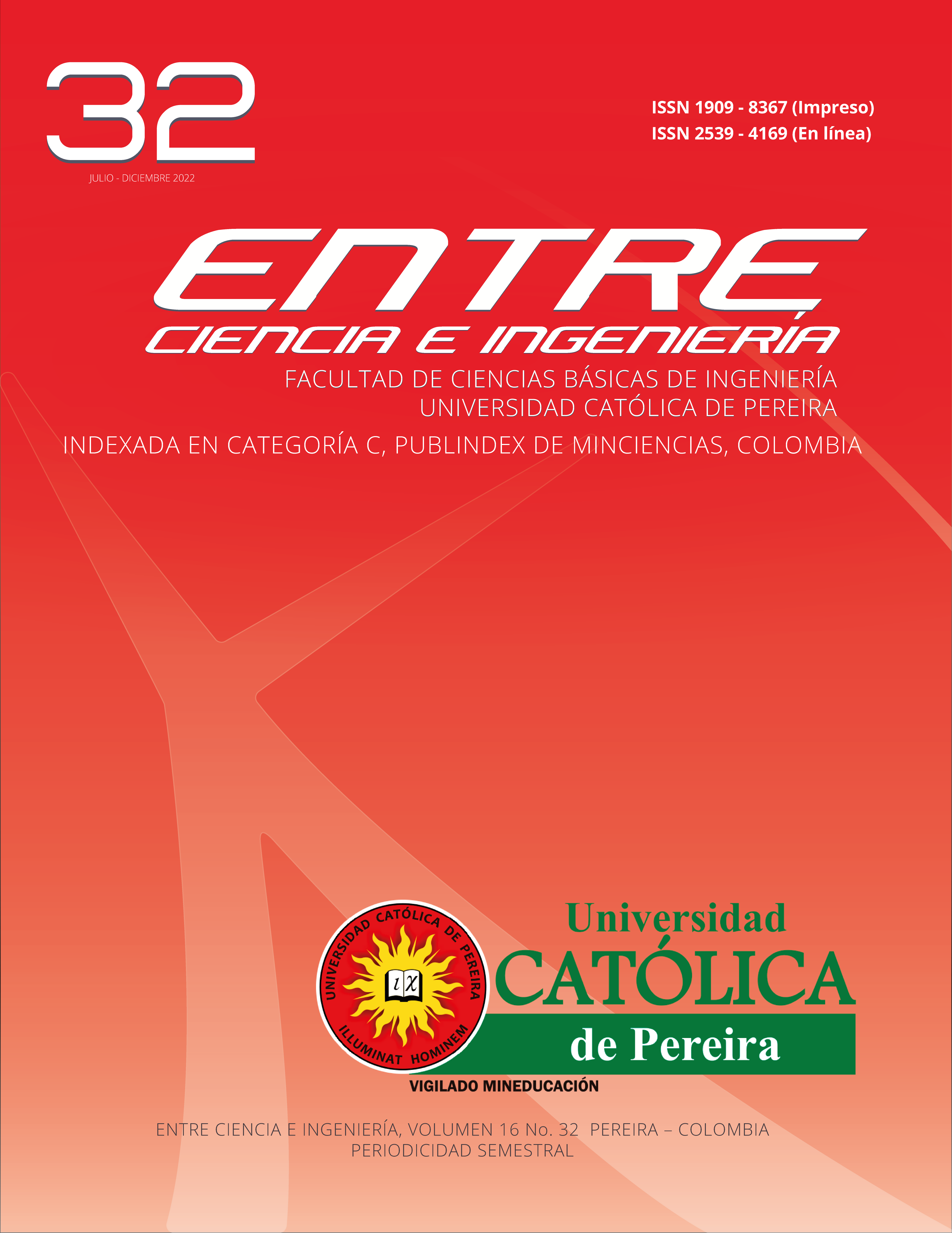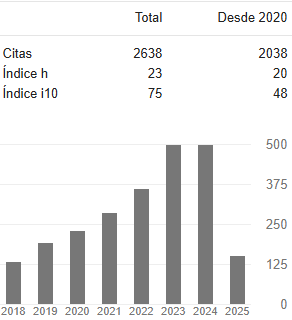Uso de Disipadores de Fluido Viscoso como medida de Reforzamiento Estructural
DOI:
https://doi.org/10.31908/19098367.2757Palabras clave:
Silencio sísmico, Disipadores de Fluido, Viscoso, Amortiguamiento, Reforzamiento EstructuralResumen
Perú un país de alta sismicidad a lo largo de su historia muestra en la actualidad ausencia de sismos de gran magnitud, por lo que es de prioridad analizar las estructuras existentes e influir si se requiere alguna intervención que mejore su comportamiento sismorresistente. El propósito principal de este proyecto investigativo es estimar si estos dispositivos son aptos para su uso como medida de reforzamiento estructural, es un proyecto de tipo aplicado – evaluativo, el cual muestra resultados favorables que validarían su uso, adicionando un amortiguamiento viscoso mayor al 15%, disipando así la energía sísmica en más del 85%; reduciendo los desplazamientos laterales y esfuerzos internos en los elementos verticales como columnas y muros de corte entre un 50% y 80%, por lo tanto, estos elementos requerirían menores áreas de acero, siendo una ventaja adicional su fácil implementación comparado a los métodos tradicionales de reforzamiento, confirmando que son adecuados para su uso como medida de reforzamiento.
Descargas
Referencias
T. Ferreira, H. Rodriguez and R. Vicente, "Seismic vulnerability assessment of existing reinforced concrete buildings in urban centers," Sustainability (Switzerland), 2020.
B. Adhikari, S. Dahal, M. Karki, R. Mishra, R. Dahal, S. Sasmal and V. Klausner, "Application of wavelet for seismic wave analysis in Kathmandu Valley after the 2015 Gorkha earthquake, Nepal," Geoenvironmental Disasters, 2020.
Instituto Geofísico del Perú, «Memoria Institucional 2016,» Geofísica y Sociedad, Lima, 2017.
M. Matsuoka, S. Mito, S. Midorikawa, H. Miura, L. Quiroz, Y. Maruyama and M. Estrada, "Development of building inventory data and earthquake damage estimation in lima, peru for future earthquakes," Journal of Disaster Research, pp. 1032-1041, 2014.
R. Das, G. Gonzalez, J. de la Llera, E. Saez, P. Salazar, J. Gonzalez and C. Meneses, "A probabilistic seismic hazard assessment of southern Peru and Northern Chile," Engineering Geology, 2020.
S. Matsuzaki, N. Pulido, Y. Maruyama, M. Estrada, C. Zavala and F. Yamazaki, "Evaluation of seismic vulnerability of buildings based on damage survey data from the 2007 Pisco, Peru earthquak," Journal of Disaster Research, pp. 1050-1058, 2014.
C. Su, B. Li, T. Chen and X. Dai, "Stochastic optimal design of nonlinear viscous dampers for large-scale structures subjected to non-stationary seismic excitations based on dimension-reduced explicit method," Engineering Structures, pp. 217-230, 2018.
T. Trombetti, M. Palermo, A. Dib, G. Gasparini, S. Silvestri and L. Landi, "Application of a direct procedure for the seismic retrofit of a R/C school building equipped with viscous dampers," Frontiers in Built Environment, 2015.
L. Bozzo, I. Nuzzo, D. Losanno, N. Caterino and G. Serino, "Experimental and analytical characterization of steel shear links for seismic energy dissipation," Engineering Structures, pp. 405-418, 2018.
D. De Domenico, G. Ricciardi and I. Takewaki, "Design strategies of viscous dampers for seismic protection of building structures: A review," Soil Dynamics and Earthquake Engineering, pp. 144-165, 2019.
S. Kumar y S. Chakraborty, «Reduction of seismic vibration in multistorey structures retrofitted with nonlinear viscous dampers using mode summation method,» Applied Mathematical Modelling, pp. 294-310, 2020.
J. Xu, S. Xu and Z. Yuan, "Probabilistic seismic analysis of single-layer reticulated shell structures controlled by viscoelastic dampers with an effective placement," Engineering Structures, 2020.
K. Kariniotakis y T. Karavasilis, «Limits for the interstorey drift sensitivity coefficient θ of steel MRFs with viscous dampers designed according to Eurocode 8,» Soil Dynamics and Earthquake Engineering, pp. Pages 203-215, 2019.
B. Chalarca, A. Filiatrault and D. Perrone, "Seismic Demand on Acceleration-Sensitive Nonstructural," Journal of Structural Engineering (United States), 2020.
M. A. Enriquez y C. F. Sánchez, «Evaluación Sísmica y Propuesta de Reforzamiento con Disipadores de Energía al Hospital Nacional Almanzor Aguinaga Asenjo de Chiclayo - Región Lambayeque, actualizado a la norma E 030 2016,» Facultad de Ingeniería Arquitectura y Urbanismo - Escuela de ingeniería Civil - Universidad Señor de Sipan, Chiclayo, 2016.
E. A. Chilón, «Diseño y Análisis sísmico comparativo entre un sistema con Aisladores de Núcleo de Plomo y un sistema con Disipadores de Fluido Viscoso en una edificación de 4 niveles, Chiclayo, 2017,» Facultad de Ingeniería - Escuela de Ingeniería Civil Ambiental - Universidad Católica Santo Toribio de Mogrovejo , Chiclayo, 2017.
V. Fernandez y A. Mendo, «Damping modification factors for the design of seismic isolation systems in Peru,» Earthquake Spectra, 2020.
L. Romero, C. Casabonne and E. Olivares, "Performance based engineering for the “Banco de la Nación” tallest tower in Lima, Peru," 11th National Conference on Earthquake11th National Conference on Earthquake Engineering 2018, NCEE 2018: Integrating Science, Engineering, and Policy, pp. 5919-5928, 2018.
G. Villarreal y M. Diaz, «Edificaciones con Disipadores Viscosos,» Editora & Imprenta Gráfica Norte S.R.L, Lima, 2016.
Norma E 030 Diseño Sismorresistente, Lima, Lima: Sencico, 2018.
A. Moslehi y D. De Domenico, «Nonlinear response spectrum analysis of structures equipped with nonlinear power law viscous dampers,» Engineering Structures, 2020.
American Society of Civil Engineers (ASCE), Minimum Design Loads and Associated Criteria for Buildings and Other Structures, Reston, Virginia: Published by American Society of Civil Engineers, 2016.
American Society of Civil Engineers (ASCE), Minimum Design Loads and Associated Criteria for Buildings and Other Structures, Reston, Virginia: Published by American Society of Civil Engineers, 2010.
Descargas
Publicado
Número
Sección
Licencia
Derechos de autor 2023 Entre Ciencia e Ingeniería

Esta obra está bajo una licencia internacional Creative Commons Atribución-NoComercial 4.0.



















